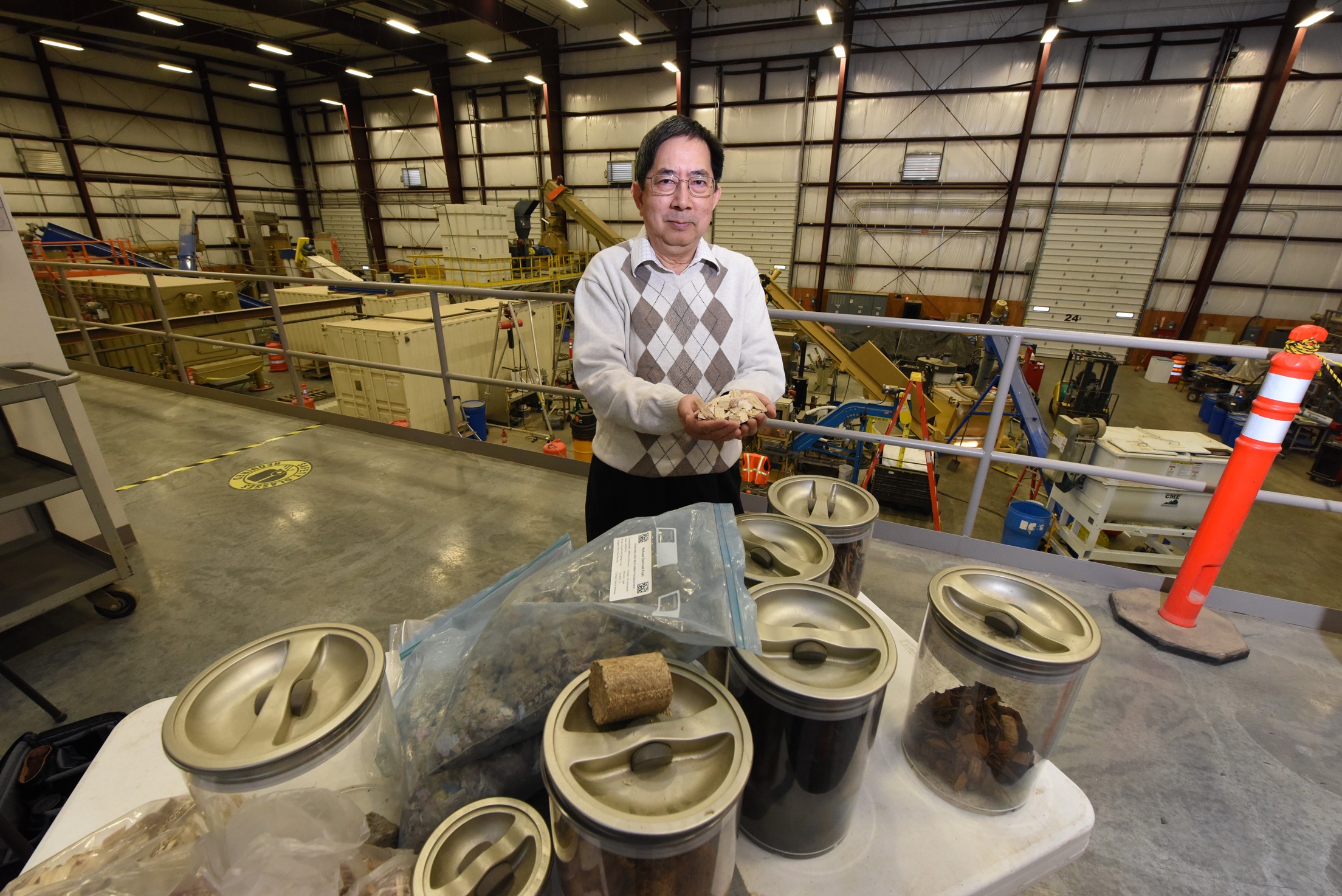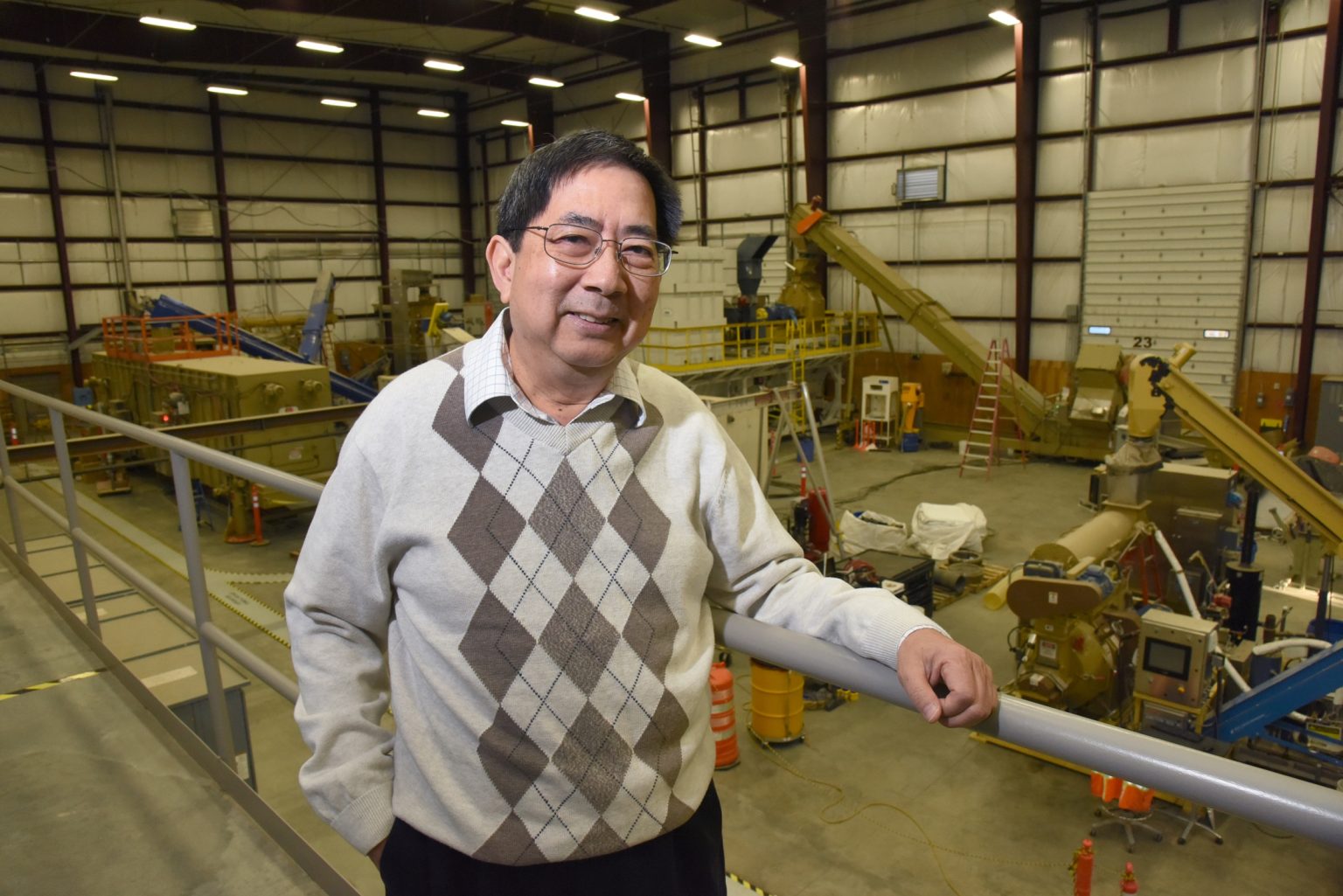When Quang Nguyen talks about feedstock challenges facing the bioenergy industry, people quiet down and start taking notes. That’s because the soft-spoken engineer has as much experience – nearly 40 years – in startup and integration of bioenergy plants as anyone in the business.
In that time, Nguyen (pronounced “GWIN”) has witnessed many of the bioenergy industry’s triumphs and challenges. The lessons he has learned will help new biorefineries as he joins the Biomass Feedstock National User Facility (BFNUF) team at Idaho National Laboratory (INL).
“I think INL has the capability to overcome some of the technical barriers the bioenergy industry has faced for decades,” said Nguyen, who took over as group leader for the BFNUF’s Process Demonstration Unit (PDU) on Oct. 1.
Industrial processes have interested Nguyen since he was very young. His parents raised him and his five siblings in Saigon during the Vietnam War, and he distinctly remembers a childhood field trip to a refinery and a soap factory that also made toothpaste.
“I didn’t understand the refinery stuff,” he said. “But the soap and the toothpaste – a little kid can understand that. It made a good impression.”
In 1971, Nguyen moved to Canada to study chemical engineering at the University of Ottawa. His entire family joined him several years later.
Nguyen’s first taste of the bioenergy industry came when, as an undergraduate, he found work turning spent sulfite liquor from the waste stream of a pulp mill into industrial ethanol. He eventually earned a master’s degree in chemical engineering, specializing in heavy water, as well as a master’s in business administration.
In 1977, Nguyen took a job at a company called Iotech, where he set up a pilot plant for turning waste straw into animal feed. “I was feeding sheep for two years as part of that,” he said.

Two years later, the U.S. Department of Energy (DOE) turned to Iotech for help turning biomass into biofuel. Nguyen began using dilute acid and enzyme treatments to convert wheat straw, barley straw and hybrid poplar into cellulosic ethanol.
With the exception of a stint as a nuclear technical supervisor, Nguyen spent most of his career designing and operating commercial biorefineries. All said, he oversaw seven pilot, demonstration and commercial plants for companies such as Tembec.
In 1993, when the National Renewable Energy Laboratory (NREL) offered Nguyen a job setting up a new biomass ethanol pilot plant in Golden, Colorado, Nguyen jumped at the chance. The pilot plant used dilute acid pretreatment and enzymatic hydrolysis, similar technologies to those that cellulosic biorefineries use today.
He stayed at NREL for nine years, serving as team lead of industrial process development. When DOE funded several cellulosic ethanol demonstration projects in 2002, Nguyen landed a job with Abengoa to build a pilot plant in York, Nebraska, and a biorefinery in Salamanca, Spain. Both plants were built in parallel and used dilute acid pretreatment and enzymatic hydrolysis.
Nguyen worked at Abengoa for 14 years and played a key role in process development, design, construction and startup of the integrated one-ton-per-day cellulosic ethanol pilot plant in York, the integrated 90-ton-per-day cellulosic demonstration plant in Salamanca, and a pretreatment system for a 950-ton-per-day commercial demonstration cellulosic ethanol plant in Hugoton, Kansas.
Nguyen accepted the position with BFNUF in early 2016.
He says the emerging bioenergy industry has consistently faced the very feed-handling challenges that the BFNUF was designed to help solve. “It’s in the interest of people in this field to see these biorefineries successful,” he said. “I’m hoping that, working with industry, we can find quick solutions and get them moving ahead.”
BFNUF Director Kevin Kenney said Nguyen’s background makes him a valuable addition. “We are delighted to have Quang join our User Facility team,” Kenney said. “His industry experience brings new insights and authority to providing integrated solutions that meet industry scale-up and integration needs.”
In the short term, Nguyen will likely travel to DuPont’s cellulosic ethanol plant in Nevada, Iowa, as part of the DOE’s Technologist in Residence Program. “I always like to be on the front line,” he said. “The more challenge, the better.”
In Nguyen’s free time, he likes to cook, a skill he learned from his mother in Vietnam. “My wife is a good baker,” he said. “So we make a good team.”
Nguyen and his wife have three children, two of whom are currently studying chemical engineering in college.





